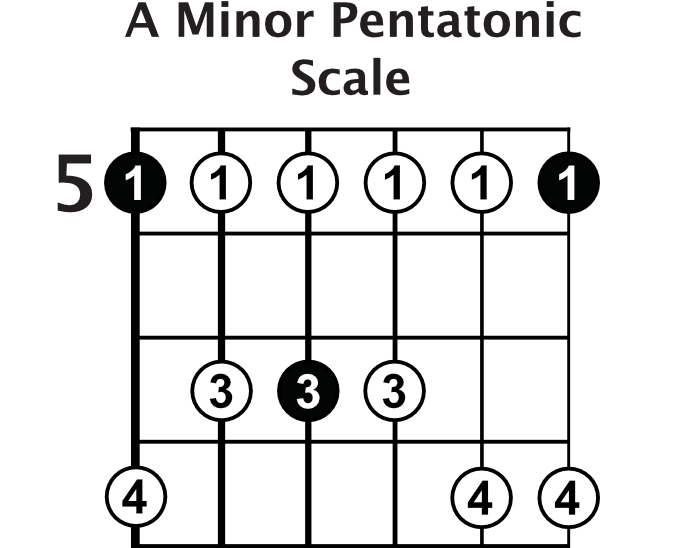In this lesson, we're going to cover one of the first parts of learning how to play lead guitar. I'm going to show you the 5 essential guitar scales. These scales are the ones you'll find yourself using the most in your lead guitar playing. For all of these scales, we are going to be using A as our tonal center. This means that the root note of all these scales will be an A.
The Major Scale
The major scale is a 7 note scale made up of a pattern of whole-steps and half-steps. When we look at our fretboard a whole-step is 2 frets, and a half-step is 1 fret.

The pattern for the major scale is whole-step, whole-step, half-step, whole-step, whole-step, whole-step, half-step.

So when we apply that formula, starting on an A, we get the following notes.

Now that you understand how the major scale is made, we're going to take a look at the most common shape you'll use.

Pro Tip: Look for patterns within scale shapes to help you memorize them.
The Major Pentatonic Scale
The major pentatonic scale is very closely related to the major scale. For this scale, we'll follow the exact same pattern as the major scale, except we'll leave out the 4th and 7th notes. This gives us a simple 5 note scale. Here's the most common major pentatonic shape.

The Natural Minor Scale
The third scale we're going to take a look at is the natural minor scale. There are a few different ways to approach this scale, but we're going to focus on relating it back to the major scale. The way we do this, is by simply taking the notes in our major scale, and lowering the 3rd, 6th, and 7th degrees down a half-step. Once we do this, we're left with our minor scale.

This is the most common shape you'll use for the minor scale.

The Minor Pentatonic Scale
Just like the major pentatonic scale, the minor pentatonic scale is very closely related to another scale. In this case, the natural minor scale. To make a minor pentatonic scale, we'll remove the 2nd and 6th scale degrees from our natural minor scale.

The Blues Scale
The final essential scale is the blues scale. If you know your minor pentatonic scale, then this one is really easy. All you have to do is add one note. This note is called the flat 5 (or sharp 4) note.

The last step is to apply these scales to some relevant music. I've created a jam track for you that you can download. You'll see it right below the video on this page. Do your best to get some of these shapes under your fingers and work on playing them along to the jam track I've provided or a metronome.

